 |
 |
 |
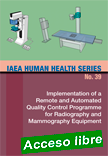 |
Implementation of a Remote and Automated Quality Control Programme for Radiography and Mammography Equipment
IAEA ¦ Human Health Series ¦ No. 39 ¦ STI/PUB/1936 ¦ Date published: 2021 ¦ 123 pages
This publication provides a framework for the quality control (QC) of radiographic and mammographic imaging systems using remote and automated tools. The methodology provided in this publication is designed to be easy to implement, in order to support initiation of remote/automated QC programmes. It is based on simple, inexpensive test objects and promotes collection of data in a uniform, harmonized manner allowing for intercomparison and benchmarking.
|
These tests are not intended to replace the comprehensive performance evaluation of the radiographic systems by a CQMP. They can, however, detect deficiencies in system performance before they become clinically significant. Furthermore, frequent QC testing promotes a culture of quality in imaging.
|
 |
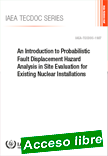 |
An Introduction to Probabilistic Fault Displacement Hazard Analysis in Site Evaluation for Existing Nuclear Installations
IAEA ¦ TECDOC-1987 ¦ Date published: 2021 ¦ 144 pages
Probabilistic fault displacement hazard analysis (PFDHA) is a relatively new methodology, and actual examples of applications are quite limited. The current publication provides an introduction to probabilistic approaches to fault displacement hazard assessment with reference to relevant IAEA safety standards. It delineates the most important aspects of PFDHA (including up to date practices, open problems, and challenging issues) within a coherent framework.
|
The information provided will be valuable not only for Member States when applying PFDHA to the site safety assessment of existing installations, but also for nuclear power plant operating organizations, regulatory bodies, vendors, technical support organizations and researchers working in the area of seismic hazard assessment.
|
 |
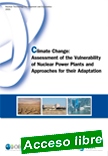 |
Climate Change: Assessment of the Vulnerability of Nuclear Power Plants and Approaches for their Adaptation
OECD - Nuclear Energy Agency ¦ NEA No. 7207 ¦ 2021 ¦ 160 pages ¦ Published: November 2021
Climate change will create specific risks and challenges for nuclear power plants and the electricity system as a whole. Extreme weather events caused by climate change – such as floods, storms, heat waves and droughts – have already affected the operation of nuclear power plants. Any increase in the temperature of the water used to cool nuclear power plants can also lead to reductions in their power output due to decreasing thermal efficiency.
|
This report sets out the adaptation strategies that can be effectively implemented to improve the resilience of existing plants as well as any new installations. The costs of adaptation to climate change can vary significantly depending on the type of reactor, the climate change issues affecting them, as well as the applicable regulations and standards. However, while these adaptation costs can, in some cases, be significant, the costs of inaction – both directly at the plant level and indirectly for the electricity system – are likely to be even higher.
|
 |
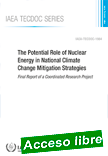 |
The Potential Role of Nuclear Energy in National Climate Change Mitigation Strategies
IAEA TECDOC No. 1984 ¦ English ¦ 120 pages ¦ Date published: 2021
Nuclear energy is considered a key low carbon technology for achieving ambitious and urgent climate change mitigation. Following adoption of the Paris Agreement, the IAEA initiated a coordinated research project (CRP) to support Member States assess the potential role of nuclear energy in their national climate and energy strategies.
|
This publication presents the findings of the CRP, which brought together research teams from twelve countries facing a range of energy, development and climate challenges, and summarizes their methodological approaches, analytical results and policy insights. The publication demonstrates a wide array of possibilities to undertake rigorous quantitative analyses and provide scientific advice to policy makers on the linkages between nuclear energy and climate change. It is expected that the methods and results presented here will also encourage additional in-depth studies on this topic.
|
 |
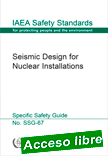 |
Seismic Design for Nuclear Installations
IAEA Safety Standards Series No. SSG-67 ¦ English ¦ STI/PUB/1949 ¦ 65 pages ¦ Date published: 2021
This Safety Guide provides recommendations on how to meet the applicable safety requirements in relation to the design aspects of new nuclear installations subjected to seismic hazard. These recommendations focus on the consistent application of methods and procedures, in accordance with best practice, for seismic analysis, design, testing and qualification of structures, systems and components.
|
New recommendations include applications of seismic isolation systems, the seismic margin to be achieved by the design and application of the graded approach. This Safety Guide is intended for use by organizations involved in the seismic design of nuclear installations, in analysis, verification and review, and in the provision of technical support, as well as by regulatory bodies.
|
 |
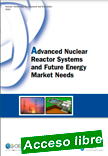 |
Advanced Nuclear Reactor Systems and Future Energy Market Needs
OECD - Nuclear Energy Agency ¦ NEA No. 7566 ¦ 2021 ¦ 80 pages
Energy markets will be significantly different in the future. The electricity generation system is becoming more diverse with the development of energy-related technologies including renewable energy sources, storage technologies and demand-side management. Beyond the electricity sector, various low-carbon energy technologies are being developed to respond to the need to decarbonise hard-to-abate sectors such as heavy industry and long-distance transportation.
|
In this report the NEA investigates the changing needs of energy markets and the potential role of nuclear technologies as low-carbon energy sources. Focusing on the technical characteristics of advanced nuclear reactor systems, including Generation III/III+ reactors, small modular reactors and Generation IV reactors, it explores the ways these advanced nuclear technologies could address the future energy market needs. The conclusion is that advanced nuclear reactor systems, while complying with the flexibility requirements of the electricity grid and supporting system reliability, have a large potential as alternative low-carbon energy sources for residential and industrial heat supply and hydrogen production.
|
 |
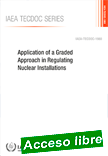 |
Application of a Graded Approach in Regulating Nuclear Installations
IAEA TECDOC No. 1980 ¦ English ¦ 332 pages ¦ Date published: 2021
This publication addresses the basics of the application of a graded approach in the regulatory oversight of nuclear installations, describes the approaches currently implemented by several regulatory bodies around the world and, based on these examples, proposes a generic methodology for application of a graded approach to regulation of nuclear installations.
|
The publication provides practical examples and information on developing and implementing strategies and processes for all regulatory functions.
|
 |
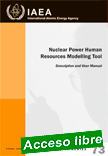 |
Nuclear Power Human Resources Modelling Tool. Description and User Manual
IAEA ¦ Training Course Series No. 73 ¦ English ¦ 82 pages ¦ Date published: 2021
This publication provides detailed explanations of the initial data needed to gain a comprehensive
understanding of the Nuclear Power Human Resource modelling tool and summarizes each of the
simulator tabs, modifiable worksheets and various controls. A complete description of all the
modelling tool’s features is also provided.
|
A detailed set of examples is provided in the appendices.
|
 |
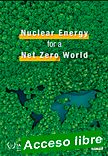 |
Nuclear Energy for a Net Zero World
IAEA ¦ Date published: 2021 ¦ 57 pages
Ahead of the COP26 climate summit, the IAEA has released Nuclear Energy for a Net Zero World. The special report highlights nuclear power’s critical role in achieving the goals of the Paris Agreement and Agenda 2030 for Sustainable Development by displacing coal and other fossil fuels, enabling the further deployment of renewable energy and becoming an economical source for large amounts of clean hydrogen.
|
.
|
 |
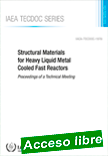 |
Structural Materials for Heavy Liquid Metal Cooled Fast Reactors
Proceedings of a Technical Meeting
IAEA TECDOC No. 1978 ¦ English ¦ 240 pages ¦ Date published: 2021
The compatibility of structural materials, such as steels with lead and lead-bismuth eutectic, poses a critical challenge in the development of heavy liquid metal (HLM) cooled fast reactors. Factors such as the high temperatures, fast neutron flux and irradiation exposure and corrosiveness provide a severe environment for the materials in these advanced reactor systems.
|
The compatibility of liquid coolant with structural materials is critical for the development of innovative nuclear energy systems. To understand the current status of the research and development in this area as well as to provide a forum to exchange information on structural materials for HLM cooled reactors at the national and international levels, the IAEA organized a technical meeting. This resulted in the current publication which presents the summaries of the technical and the group sessions, conclusions and recommendations, and the papers presented at the event.
|
 |
| |
|
|

|
|
|
| |
|
|
| |
| |
|
|
| |
| |
|
|
| |
| |
|
|
|
| |
| |
